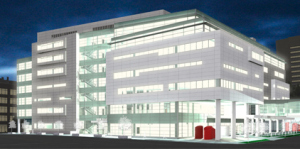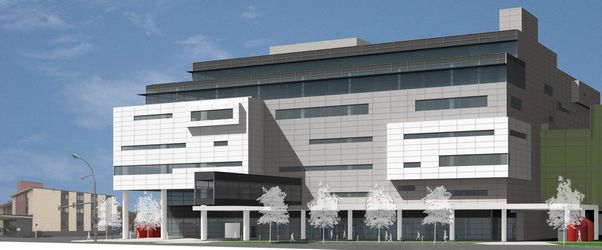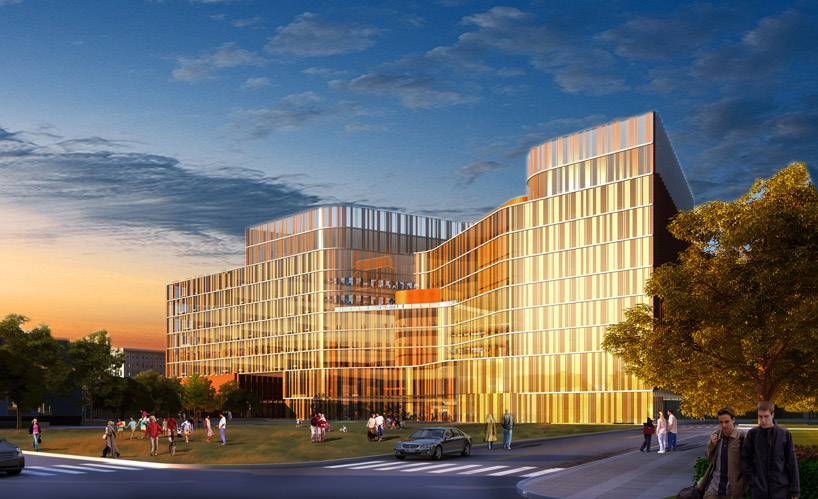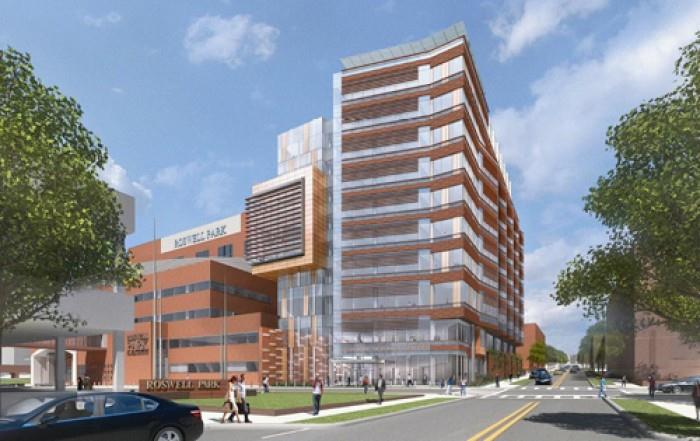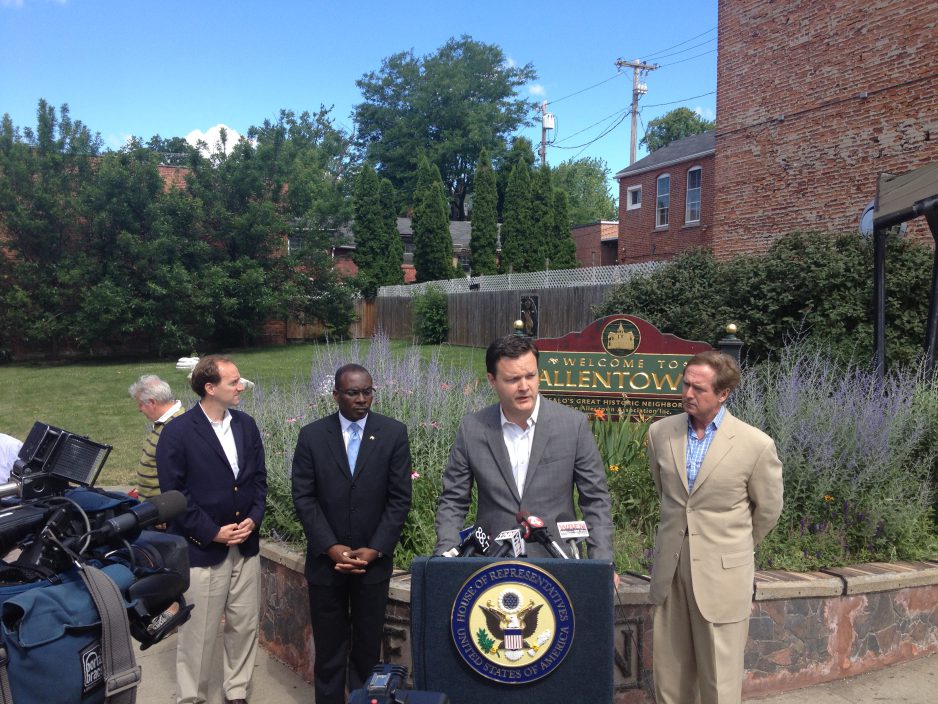The University at Buffalo (UB) unveiled the HOK design for the new School of Medicine and Biomedical Sciences building to be constructed atop the NFTA Allen/Medical Campus station on the Buffalo Niagara Medical Campus.
 Since winning the international design competition for the medical school concepts last year, HOK has worked closely with UB officials, the SUNY Construction Fund and community groups to develop the design best suited to the needs of the medical school while strengthening connections with the surrounding community. The design process is still underway, but is expected to be finalized within the next few months. The groundbreaking for the 7-story, more than 500,000-square-foot school is scheduled for the fall of 2013. The medical school will be one of the largest buildings constructed recently in the region when it officially opens in 2016.
Since winning the international design competition for the medical school concepts last year, HOK has worked closely with UB officials, the SUNY Construction Fund and community groups to develop the design best suited to the needs of the medical school while strengthening connections with the surrounding community. The design process is still underway, but is expected to be finalized within the next few months. The groundbreaking for the 7-story, more than 500,000-square-foot school is scheduled for the fall of 2013. The medical school will be one of the largest buildings constructed recently in the region when it officially opens in 2016.
Expected to bring an additional 2,000 faculty, staff and students to the Medical Campus, the steel-framed, state-of-the-art facility will feature a 6-story, light-filled glass atrium. The building’s façade will be clad with a high-performance terra cotta rainscreen and a glass curtain wall system that will bring daylight deep into the building. A convenient facility amenity will include bridges connecting to the two L-shaped buildings, the soon-to-be-built John R. Oishei Children's Hospital and Conventus medical office building.
 Serving as the building’s main interior “avenue,” there will be an atrium that will provide naturally illuminated by skylights and two glass walls, one along Washington Street and the other toward Allen Street.
Serving as the building’s main interior “avenue,” there will be an atrium that will provide naturally illuminated by skylights and two glass walls, one along Washington Street and the other toward Allen Street.
Floor layout:
- Floors 1 & 2: Multipurpose educational and community spaces for medical school and community outreach programs, such as the UB mini-medical school and other public health initiatives. The goal is to make the building’s public spaces highly accessible.
- Floors 3, 4 & 5: Core research facilities as well as wp-contentroximately 150,000-square-foot of state-of-the art, easily configurable research laboratories for faculty in the basic sciences.
- Floor 6: Advanced and specialized medical education facilities in the U.S., such as an expanded patient care simulation center, which will include the Behling Simulation Center, currently located on UB’s South Campus.
- Floor 7: Gross anatomy facilities.
The medical school’s administrative offices and academic departments will be located on floors 3-7. It will also house a surgical simulation center where medical students can conduct surgeries in a simulated operating room. A complementary robotic surgery simulation center will train students and physicians in the latest remotely controlled robotic surgery technologies.
Aligning with key objectives from the UB 2020 strategic plan, the medical school will help create of a world-class medical school, increase recruitment of outstanding scientists, physician-scientists and clinicians to the university and transform the region into a major destination for innovative medical care and research.
“The new design allows us to grow our class size from 140 to 180, educating more physicians, many of whom will practice in the region,” said Michael E. Cain, MD, vice president for health sciences at UB and dean of the medical school. “It allows UB to hire more talented faculty, bringing to this community much-needed clinical services and medical training programs.”
 The new design also provides the most efficient layout for state-of-the-art medical education and research as it looks to receive LEED gold certification. A pedestrian passageway will extend through the building between Main and Washington Streets, leading to the Allen Street Western Gateway. To further promote alternative transportation modes, the passageway is deliberately aligned with a proposed Allen Street pedestrian extension from Washington to Michigan Streets, which will feature a bike share facility.
The new design also provides the most efficient layout for state-of-the-art medical education and research as it looks to receive LEED gold certification. A pedestrian passageway will extend through the building between Main and Washington Streets, leading to the Allen Street Western Gateway. To further promote alternative transportation modes, the passageway is deliberately aligned with a proposed Allen Street pedestrian extension from Washington to Michigan Streets, which will feature a bike share facility.
Cain also stated that “faculty conducting scientific and translational research will be in close proximity to faculty performing clinical care in the hospitals” and that the new design will establish “a complete continuum from discovery to patient care on one campus and in modern facilities expressly designed to efficiently maximize the medical school’s primary missions of education, clinical service and research.”
With the medical school so close to major teaching hospitals like Kaleida Health's Buffalo General Medical Center and Roswell Park Cancer Institute and research facilities like the Clinical Translational Research Center, UB will be made into a strong academic and health care contender, much like Cleveland Clinic and the University of Pittsburgh Medical Center.
For UB's downtown campus, the medical school will help create a vibrant, urban, mixed-use district seamlessly connected to the surrounding Allentown and Fruit Belt neighborhoods and other downtown communities. The $375 million medical school is partly funded by the NYSUNY 2020 legislation and private donations.
Read coverage about the medical school design unveiling below:
New UB Medical School is Designed to be an Integral Part of its Community
UB Unveils Med School Design (More Images)
UB Unveils New Downtown Medical Facility Design (With Photos)
UB Unveils School of Medicine Design
UB Unveils Design for Downtown Medical School: Building to be “Gateway”
UB Offers Images of Future Medical School
*Pictures retrieved from the University at Buffalo/HOK
*YouTube video created by the University at Buffalo

